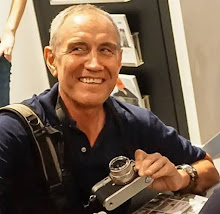I own the "big stick", as MFJ calls its 18ft/5.45m loaded telescopic whip antenna. A while back I mentioned it in these posts. Slowly, I came to like this antenna; it takes a very limited space with its 4x16ft radials and I usually bent them as available space dictates.
The MFJ-2286 with included coil is a multiband 6m-40m antenna, the loading coil has simple provision to adjust the number of turns involved in the process, the lengh of the whip can be also adjusted as needed. It takes little time to install or take down and I used it succesfully in my portable setup.
Recently I acquired a loading coil (SB Platinum 1000 from Wolf River Coils) to replace the included MFJ coil, and tried the modified antenna on 80m.
I should mention that 80m band always been hard to work with my antennas, none of them actually designed to work on 80m. My solution so far been to use antenna tuner to match the radio output to the antenna on 80m, try and pray. It worked for both voice (SSB) and digital (FT8), but it never worked good. After 3 years of hamming I had 30+ contacts on 80m, mostly stateside and some DX.
I installed the antenna with the coil in our little patio, next to house, threaded radials along the fence, added one 68ft/21m long radial for 80m band (had to snake it into the bushes outside of the fence) and tuned the setup to 80m with the help of my RigExpert AA-54 antenna analyser (the installation is not ideal due to proximity to the house and placement of the radials, hence the SWR):

I tested this setup on the air and compared it to my other not-quite-80m-antennas; my verdict is that this antenna is usable as NVIS-like 80m solution; the DX use is limited to CW or digital (FT8 and other weak signal modes) as bandwith is very narrow and the signal is weak (there were strange instances of long skip into Europe though). FT8 is a good test because most of the stations have simple vertical or dipole antennas (not beams) for this band. Here is the map showing how the other stations hear my signal (the transceiver, Flex 6300, was around 90W at the time):
And here is the map of recent contacts made with the modified MFJ-2286:

I liked the setup and will be using it from now on. It is not the best 80m vertical antenna, not even close, but for my situation it is a winner.

















